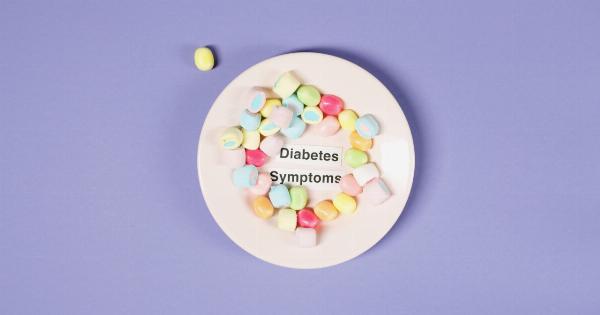In recent years, there has been growing evidence to suggest that individuals who have suffered from coronary infection are at an increased risk of developing thrombosis.
Thrombosis refers to the formation of blood clots within blood vessels, and if left untreated, can lead to serious complications such as heart attack or stroke. Despite advances in medical treatment, the risk of thrombosis remains high even after the initial infection has been managed and controlled.
The Link Between Coronary Infection and Thrombosis
Coronary infection, commonly known as a heart infection, occurs when bacteria or other microorganisms invade the heart muscle.
This can happen through various means, such as through the bloodstream or from infection in other parts of the body that spreads to the heart. When the heart tissue becomes infected, inflammation occurs, leading to an increased risk of clot formation.
Studies have shown that the presence of an inflammatory response triggered by coronary infection leads to a hypercoagulable state in the body. This means that the blood is more prone to clotting, especially in the arteries supplying the heart.
The clots that form in these arteries can partially or completely block blood flow, leading to a heart attack or other serious cardiovascular events.
Post-Infection Thrombosis Risk Factors
While everyone who has suffered from a coronary infection is at an increased risk of thrombosis, certain factors can further elevate this risk. These include:.
1. Obesity and Sedentary Lifestyle
Obesity is known to be a major risk factor for thrombosis. Excess body weight leads to chronic inflammation and an imbalance in blood clotting factors.
Additionally, a sedentary lifestyle further exacerbates this risk, as physical activity is important for maintaining healthy blood flow.
2. Smoking
Smoking has long been established as a significant risk factor for cardiovascular diseases, including thrombosis.
Chemicals present in tobacco smoke directly damage the endothelium, which is the inner lining of blood vessels, leading to a prothrombotic state.
3. Diabetes Mellitus
People with diabetes have a higher likelihood of developing thrombosis due to various reasons. High blood sugar levels can damage blood vessels, making them more susceptible to clot formation.
Additionally, diabetes is often associated with other risk factors such as obesity and hypertension, further increasing the risk.
4. Previous History of Thrombosis
Individuals who have previously experienced a thrombotic event, such as a deep vein thrombosis or pulmonary embolism, are at an increased risk of recurrence, even after a coronary infection.
These individuals should be closely monitored and receive appropriate preventive measures.
Prevention and Management Strategies
Given the high risk of thrombosis after coronary infection, it is crucial to implement preventive strategies to reduce the likelihood of potentially life-threatening events. Some key approaches include:.
1. Medications
Antithrombotic medications, such as aspirin, antiplatelet agents, and anticoagulants, are commonly prescribed to individuals who have had a coronary infection.
These medications help to prevent the formation of blood clots and reduce the risk of further complications.
2. Lifestyle Modifications
Adopting a healthy lifestyle is paramount in reducing the risk of thrombosis. This includes maintaining a healthy weight, engaging in regular physical activity, quitting smoking, and managing underlying conditions such as diabetes or hypertension.
3. Medical Follow-Up
Regular medical check-ups and follow-up appointments are essential for individuals who have experienced a coronary infection.
This ensures proper monitoring of the patient’s condition, identification of any potential risk factors, and adjustment of treatment plans if necessary.
Conclusion
Thrombosis remains a significant concern for individuals who have suffered from a coronary infection.
The inflammatory response triggered by the infection can lead to an increased risk of clot formation, which, if left unchecked, can have severe consequences. Therefore, it is essential to implement preventive strategies, such as medication, lifestyle modifications, and continuous medical follow-up, to minimize the risk of thrombotic events and improve overall cardiovascular health.





























